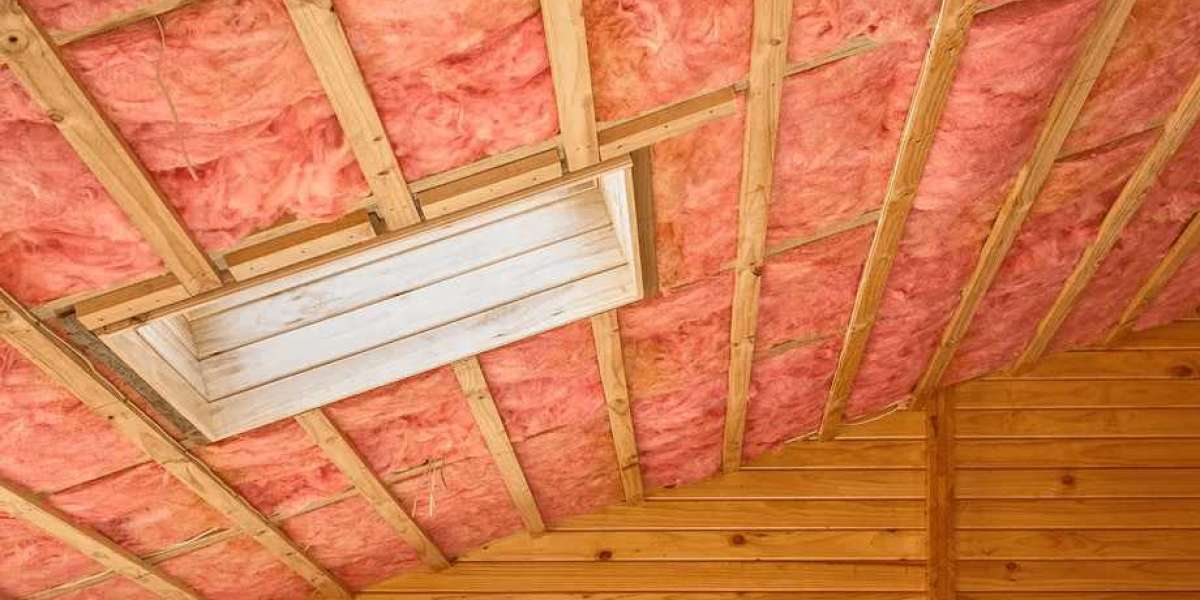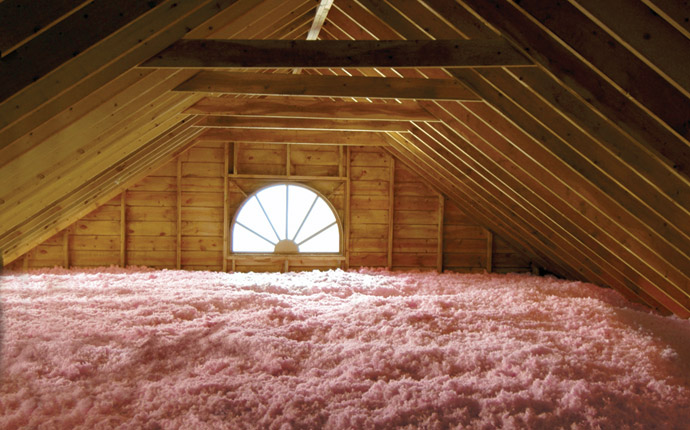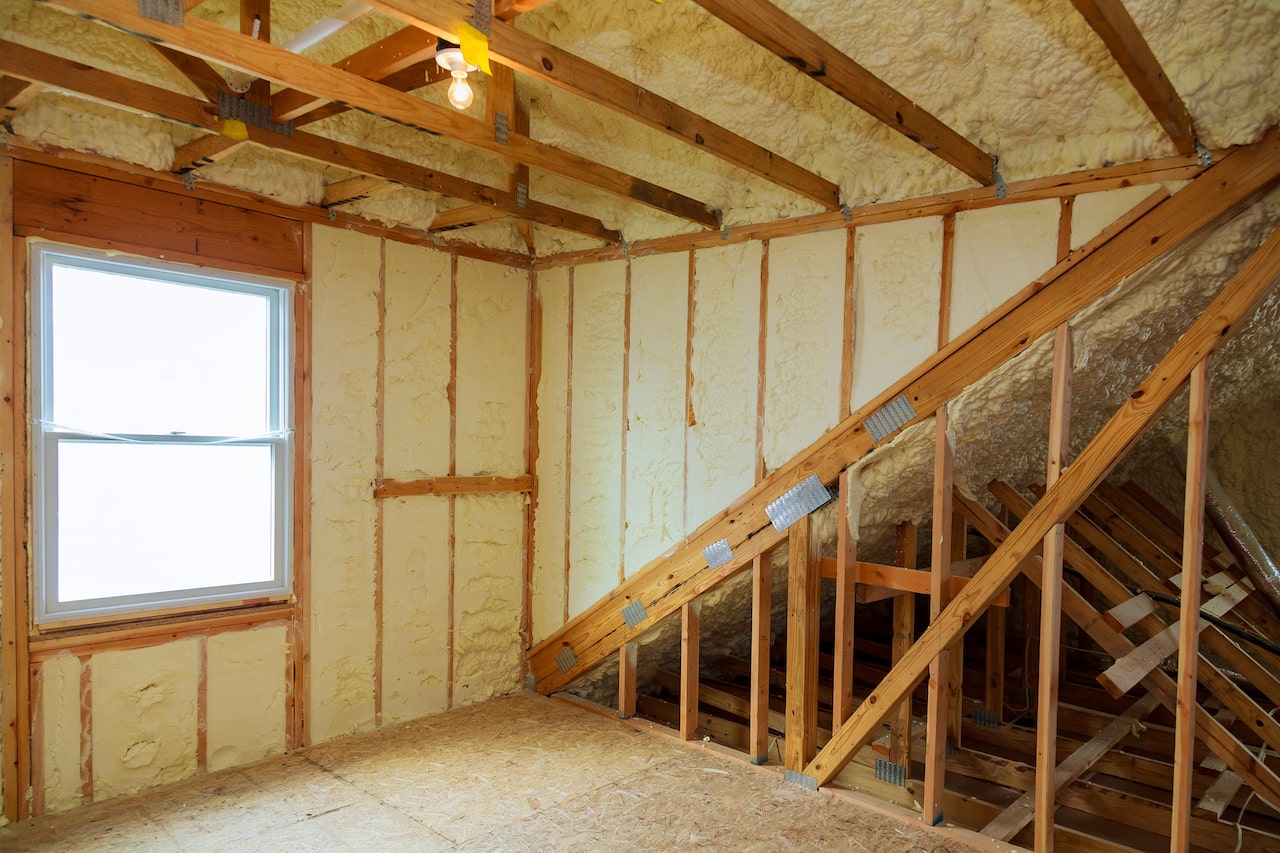Insulation has a direct impact on how comfortable your home feels throughout the year. It limits the transfer of heat, helps maintain stable indoor temperatures, and reduces the strain on heating and cooling systems. These improvements can result in consistent room temperatures, quieter interiors, and lower utility bills. It also plays a major role in blocking drafts and air leakage that often cause temperature swings and discomfort.
Upgrading or properly installing residential insulation can significantly improve indoor comfort. The type of insulation used, its placement, and how well it seals the structure are all critical factors. This article breaks down where insulation matters most, compares common insulation materials, and outlines what to consider before starting an insulation project.
Where Insulation Makes the Most Difference
Attics and Roof Cavities
Attics are a primary area for heat loss. Up to 25% of heat escapes through uninsulated or under-insulated roof spaces. Insulation in attics slows upward heat movement and limits overheating from sunlight in warmer months.
- Slows rising heat loss during winter months
- Blocks solar heat from penetrating in summer
- Helps regulate HVAC operation to avoid frequent cycling
- Prevents ice dam formation on roofs in cold climates
Walls and Exterior Partitions
Exterior wall insulation reduces heat exchange with the outdoors. It stabilizes room temperatures and prevents drafts that make living spaces feel uncomfortable.
- Minimizes hot or cold spots near walls
- Improves energy efficiency by cutting lateral heat transfer
- Adds sound dampening to reduce outdoor and room-to-room noise
- Increases structural integrity with added thermal layers
Floors and Crawlspaces
Insulation beneath floors, especially over crawlspaces or unheated areas, keeps flooring warmer in winter and helps prevent moisture from creeping into living spaces.
- Stops upward cold drafts from unheated basements or crawlspaces
- Keeps hardwood or tile floors more comfortable to walk on
- Lowers humidity levels that can affect air quality
- Reduces condensation and mold risk below ground level
Bonus Tip: Insulate behind bathtubs and around exterior wall plumbing to help prevent freezing and burst pipes during winter.
Comparison Table of Residential Insulation Types
Insulation Type | R-Value per Inch | Air Seal Capabilities | Sound Dampening | Water Resistance | Common Locations | Lifespan |
|---|---|---|---|---|---|---|
Fiberglass Batts | 2.9 – 3.8 | Low | Moderate | Low | Walls, attics, floors | 15–25 years |
Cellulose (Blown-in) | 3.2 – 3.8 | Moderate | High | Low | Walls, attics | 20–30 years |
Spray Foam (Closed) | 6.5 – 7.0 | Excellent | High | High | Walls, roofs, crawlspaces | 50+ years |
Spray Foam (Open) | 3.5 – 4.0 | Very Good | Excellent | Moderate | Ceilings, interior walls | 20–30 years |
Mineral Wool | 3.7 – 4.3 | Low | Very High | High | Walls, soundproofing zones | 30–45 years |
Rigid Foam Boards | 4.5 – 5.0 | Low (needs sealing) | Low | High | Basements, exterior walls | 30–40 years |
Technical Specifications and Material Performance
Metric | Fiberglass Batts | Cellulose | Spray Foam (Closed) | Spray Foam (Open) | Mineral Wool | Rigid Foam Boards |
|---|---|---|---|---|---|---|
R-Value per Inch | 2.9 – 3.8 | 3.2 – 3.8 | 6.5 – 7.0 | 3.5 – 4.0 | 3.7 – 4.3 | 4.5 – 5.0 |
Fire Resistance | Moderate | Moderate | High | Moderate | Very High | High |
Air Barrier Effectiveness | Low | Medium | High | High | Low | Low (with sealing) |
Sound Absorption Rating | Medium | High | High | Very High | Very High | Low |
Mold and Moisture Resistance | Low | Low | High | Moderate | High | High |
Bonus Tip: Combine two or more insulation types to optimize cost and thermal protection. For example, use rigid foam boards along exterior walls and fill wall cavities with cellulose.
Market Data on Home Energy Efficiency
According to the U.S. Energy Information Administration:
- Space heating and cooling account for roughly 51% of annual residential energy use.
- Upgrading insulation can lower heating and cooling needs by 20–30%, depending on existing conditions.
- Over 90% of U.S. homes are under-insulated based on current energy code standards.
- Homes with improved insulation tend to have HVAC systems that last longer due to reduced wear.
Things to Consider Before Making a Decision
- Climate Requirements: Higher R-values are essential in colder regions, while vapor barriers matter more in humid climates.
- Access and Installation Method: Retrofitting an older home may limit your options. Spray foam is ideal when access is tight.
- Upfront Cost vs. Long-Term Value: Closed-cell foam costs more initially but can reduce energy bills and maintenance over time.
- Indoor Air Quality Needs: Look for low-VOC materials if anyone in the home has respiratory conditions.
- Fire Rating Standards: Certain materials are better suited for attics, basements, or garages where fire risk is higher.
- Home Age and Structure: Newer homes may require different materials or methods than older, less airtight constructions.
Bonus Tip: Schedule an energy audit before committing to insulation work. It identifies key problem areas and guides product selection.
Common Questions About Residential Insulation
Can I install insulation myself?
Yes, but it's usually limited to straightforward projects like laying batts in open attic areas. More technical tasks like spray foam application or dense-packing require specialized tools and safety measures.
Will more insulation always increase comfort?
Not necessarily. Over-insulating without proper ventilation can trap moisture. It's more effective to seal air leaks and ensure balanced insulation coverage.
How can I tell if my home needs more insulation?
High heating or cooling bills, inconsistent room temperatures, or cold walls and floors are strong indicators. A thermal scan can confirm gaps.
Does insulation reduce sound between rooms?
Yes. Mineral wool and open-cell spray foam are excellent for sound control in walls, ceilings, and floors.
What R-value do I need?
Requirements vary by region. Colder climates may require R-60 in attics, while warmer regions may only need R-30. Walls generally range from R-13 to R-21.
How Residential Insulation Can Transform Your Home’s Comfort FAQ
Does insulation really make a big difference in comfort? Yes. It helps maintain stable indoor temperatures and improves both energy efficiency and indoor air quality.
Which insulation type offers the most comfort improvement? Closed-cell spray foam and mineral wool are among the top performers for thermal regulation and noise dampening.
Can insulation help in hot climates? Absolutely. It blocks external heat, reducing the need for air conditioning and making the home feel cooler.
What are signs that insulation is failing? Drafts, uneven room temperatures, rising energy costs, and visible settling or gaps in attic insulation.
How long does insulation last? Most insulation types last 20 to 50 years. Lifespan varies by material quality, installation, and exposure to moisture.
Make the Right Decision
Residential insulation improves comfort by maintaining indoor temperatures, reducing unwanted noise, and lowering energy use. The right material for your home depends on your climate, building type, and project goals. Compare R-values, installation methods, and lifespan before making a decision. Evaluate your home's current insulation and identify the areas with the greatest impact potential.
Reviewer: Olivia Thompson has spent 10 years working in spray foam insulation, helping companies grow their visibility. She reviewed this article and provided valuable suggestions on how to better align the content with the needs and expectations of customers, ensuring it resonates with the target audience.






